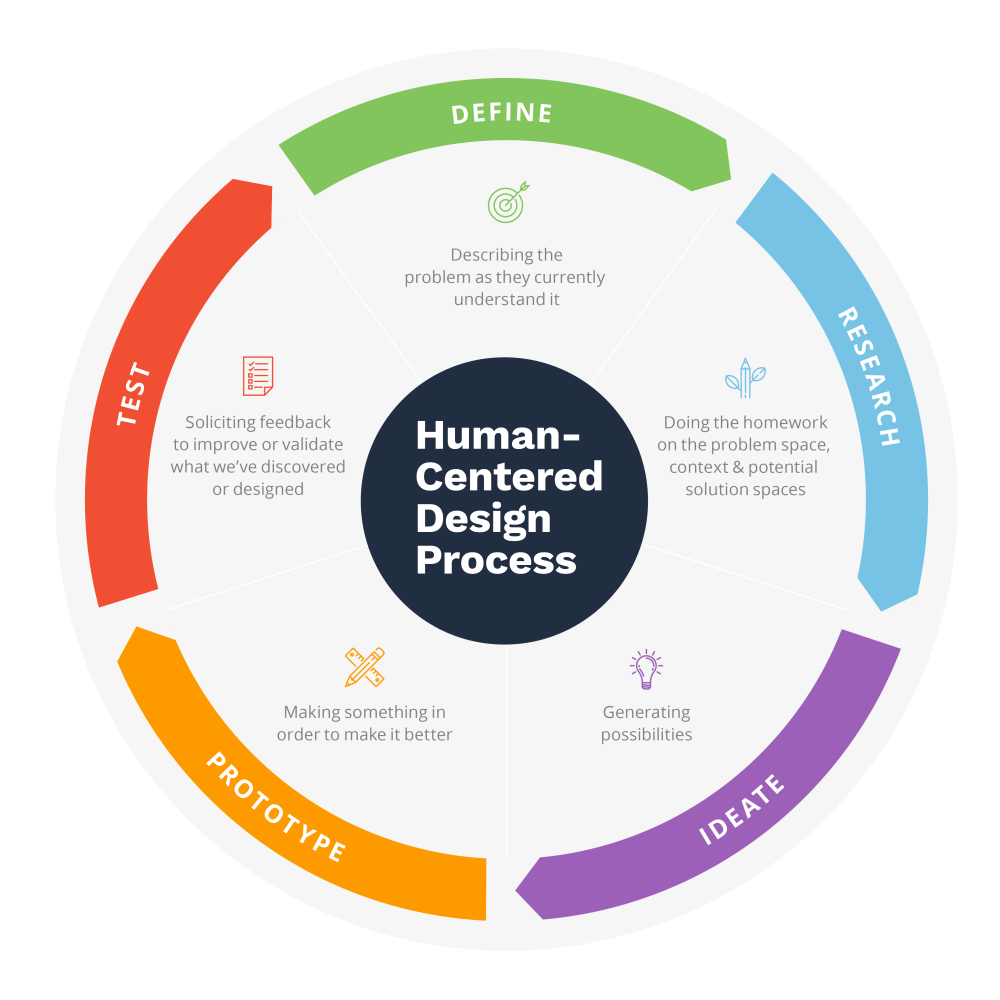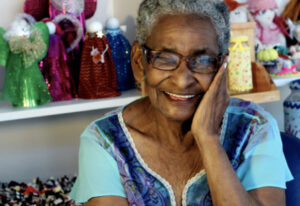AfriCanadian
Affordable
Housing Playbook

OUR METHODOLOGY

Human-Centred Design (“Design Thinking”)
Human-centred design, popularly known as design thinking, is an iterative, collaborative approach to problem-solving. We de-risk problem-solving by co-designing with end users, building solutions in small testable steps, and collecting feedback while there’s still time to improve the results.
The most important thing about solving problems with human-centred design is that it keeps the stakeholders at the heart of the process. Problems are defined and described by the people who deal with them. The research includes consulting individuals with lived experience, testing prototypes of our solutions, and depending on feedback from real stakeholders. Human-centred design is how we put creativity and empathy to work to solve problems.
Guiding Values

Our Purpose
To Build the Village, fostering community and intergenerational connections
To create a healing environment
To develop collective solutions expanding beyond a Canadian context

Our Process
Gather broad expertise and experiences
Collaborate and be open to new learning
Remember the keys to execution: sharing learning with each other and CMHC and trusting the process

Our Success
Building relationships with each other
Developing an evidence-based plan for moving forward
Delivering an African Canadian housing model
Hitting project milestones
Community Map
WHO DO WE NEED TO ENGAGE WITH AS PART OF THIS WORK?

DESIGN RESEARCH
- Interviews
- Stackholder Labs
- Online Surveys
One-on-one interviews with a specific set of stakeholders will provide deep insights from those who are well-informed in the areas in which we want to learn. This method will also include quick-burst, street style interviews to reach larger numbers of participants.
These 90-minute online labs are facilitated to mine for specific insights from identified target groups. Groups will include between 12 to 25 participants. Overlap facilitators will guide stakeholders through a sequence of information-seeking activities.
Short online surveys will allow us to reach a large number of stakeholders. They are designed to bolster the ethnographic research and in-person stakeholder engagement by surfacing a large number of responses to validate the qualitative findings across a statistically significant sample size.
Research trends & insights
We interviewed community leaders on affordable housing as the foundation of a community to uncover the needs of Continental African Canadians. The insights we uncovered express what continental African Canadians need from such a community in 11 key areas:

problem Map
what problems do we need to solve?

future state journey map:
Empathy Map: Yvette
The working group imagined what a fictional older continental African Canadian woman (Yvette) might be experiencing in her everyday life. They imagined the types of hobbies she would enjoy, how she would like to spend her time, her worries and her goals.

see & Do
● Cook
● Sewing
● Errands
● Medications
● Socialize
● Walk in the park
● Read books
● Spend time with
family
● Visit with
grandchildren
● Struggles with things
she used to find easy
Feel
● Aging alone
Good old times
● Sick
● Tired
● Sometimes gets lonely
● Cares about tradition
● Energetic
● Doesn’t want to feel
like a burden
● A healthy meal
say & hear
● I miss the good old
days
● Need home support
● Make a call to a friend
● Free bus ride day
● News
Think
● Wants to connect with young people
● Go to a senior’s social club
● Safety for
grandchildren
● Worried about aging and constraints
● Accessible and safe around the house
● Remembering old lost friends
● How to get a ride to the shopping malls
● Is there enough space in current home for her family
● Meet more seniors to chat about life
Services Map: Yvette
By empathising with Yvette, the group ideated a series of housing supports and services that would be beneficial to older continental African Canadians.
